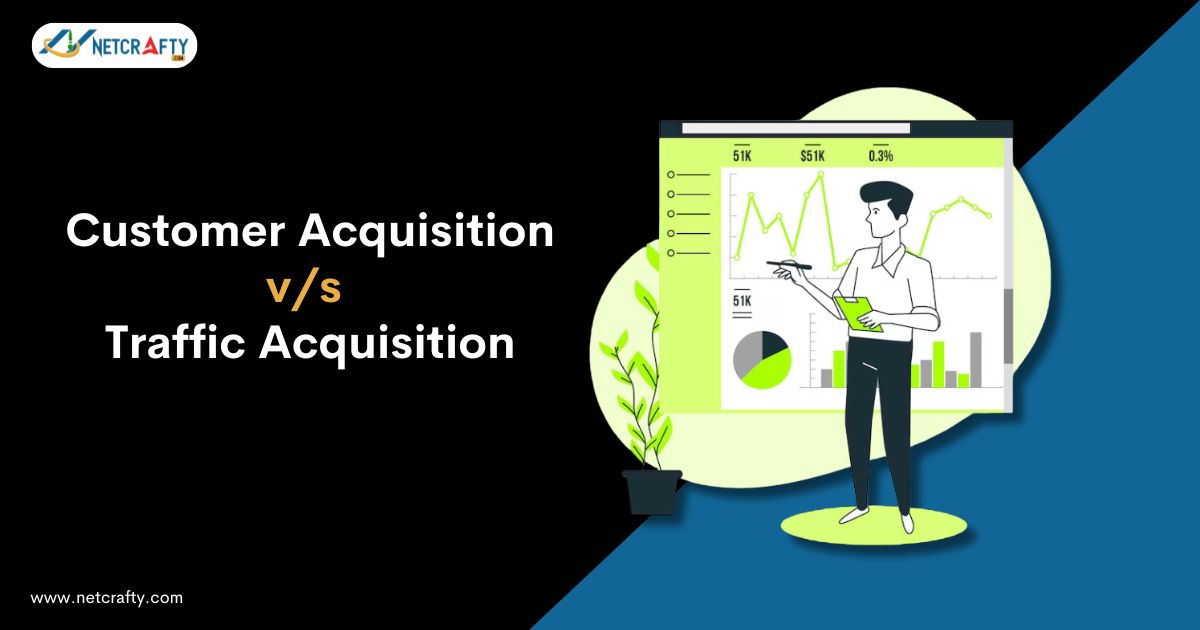Google Analytics reports are a powerful tool that can enlighten you on the origins of your users, traffic, and their journey to your website or app. The acquisition report in Google Analytics is particularly insightful, helping you pinpoint the sources of your website users.
Acquiring users and traffic are two terms, and most people conflate them, assuming that increasing traffic equates to acquiring valuable users. While these concepts are related, they are not the same. Each plays a unique role in scaling digital businesses.
What is User Acquisition?
Through marketing, user acquisition attracts new users to a website, service, platform, or app. It goes beyond just generating interest or visits to a website; it only focuses on creating meaningful interactions that lead to your product, service, or app adoption.
What is Traffic Acquisition?
Traffic acquisition is about getting people to notice your website and come inside to look around. It is typically done by increasing visibility across various platforms. It is about generating exposure and awareness rather than focusing on immediate conversions.
The Differences between User Acquisition and Traffic Acquisition:
End Goals
User Acquisition: User acquisition involves converting visitors into active users or customers who regularly interact with your business’s goods or services. This establishes your business for long-term success in the digital industry.
Traffic Acquisition: Traffic acquisition increases the number of visits to your website or app, thus increasing your visibility and recognition, which is critical for expanding your business exposure and reach.
Success Metrics
User Acquisition: It focuses on high-quality users likely to convert and retain. Conversions, purchases, user sign-ups, customer lifetime value (CLV), and cost-per-acquisition contribute to a user’s success.
Traffic Acquisition: Success is analyzed by page views, unique visitors and sessions. It focuses on volume rather than user quality.
Strategy Focus
User Acquisition: It focuses on high-quality users likely to convert and retain. Conversions, purchases, user sign-ups, customer lifetime value (CLV), and cost-per-acquisition contribute to a user’s success.
Traffic Acquisition: Success is analyzed by page views, unique visitors and sessions. It focuses on volume rather than user quality.
Relationship with the Marketing Funnel
User Acquisition: User Acquisition plays a role further down the funnel, concentrating on converting leads into actual users and retaining them.
Traffic Acquisition: Traffic generally operates at the top of the marketing funnel, increasing brand recognition and attracting potential prospects.
How Traffic and User Acquisition Work Together

The initial step is to drive traffic to your website for conversions. However, not all traffic leads to conversions, where user acquisition strategies come in to nurture, engage, and convert high-quality visitors into customers.
- Awareness Leading to Conversion: Traffic acquisition helps to generate awareness. Even if not all visitors convert initially, they may return later and convert through retargeting or nurturing efforts.
- Testing Audience: You can test which audiences are more likely to convert by driving traffic through various channels. This can refine your user acquisition efforts and make them more cost-effective.
- Optimizing the Funnel: Traffic acquisition fills the top of your marketing funnel, providing a larger pool of prospects. User acquisition strategies are applied to move these prospects down the funnel toward conversion.
- Cost Efficiency: Businesses can increase their Return On Investment by choosing those traffic sources that fit their user acquisition goals.
Traffic and user acquisition are critical techniques for driving growth in today’s competitive digital market. Companies use smart methods to maximize their internet presence to achieve long-term success. Understanding the unique roles allows you to create a balanced marketing approach that drives your brand’s awareness and meaningful engagement.

Leave a Reply